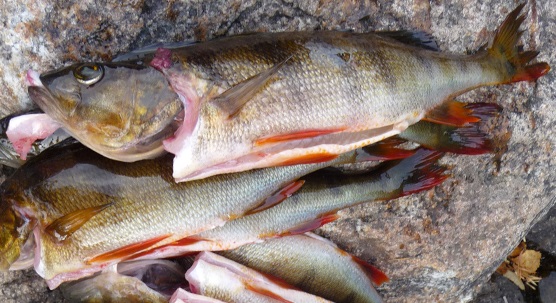Press release 2016-08-24 at 9:49

In Finland and Sweden the concentrations of hazardous substances in waters are the most commonly monitored in perch. The substances usually found in fish include mercury, flame retardants and fluorinated compounds, but in Lapland the concentrations are lower than in areas impacted by industry and urban settlements.
The Finnish Lapland is renowned for its purity, even if environmental toxins are present at low concentrations in the air, water and living organisms. The main concern in the Arctic region is the long-range transport of substances and increased chemical loading which may take place due to other causes. This is why the monitoring and mapping of hazardous substances must continue in Finland, as stated in the recent report of the Finnish Environment Institute, the National Institute for Health and Welfare and the Finnish Meteorological Institute. New chemicals and the impacts of climate change increase the risk of long-range transport.
The research institutes studied the concentrations of mercury and permanent organic pollutants (POPs) in the air, fallout and biological samples. Compounds are transported to the north of Finland by air currents, as well as in materials transported by humans.
The concentrations of mercury and POP compounds are in general lower in northern Finland than in the southern parts of the country. Over the past couple of decades the overall trend in the concentrations of POP compounds that are regulated by international agreements in the Finnish Lapland has been decreasing.
Monitoring data needed to reduce risks
A set of measures is proposed in the report to fulfil the obligations laid down by international agreements, organise the monitoring of hazardous chemicals and manage risks.
According to the research institutes, the monitoring of air quality and fallout at the Pallas research station must be continued and expanded. Long-term monitoring of mercury and POP compounds in fish and lake sediment layers should also be included. Should high concentrations be observed in environmental monitoring and mapping, study is also needed on toxins that end up in the human body via the food chain. Substances analysed in reindeer may be considered as an indicator of environmental load.
Climate change may impact on the transport of substances to Lapland if, for example, substances are released back to the cycle when the ice sheet melts. Substances that are no longer used are being replaced by new chemicals, whose impacts may be poorly known. This is why the researchers recommend closer international cooperation in the mapping of new chemicals and the modelling of forecasts and behaviour of substances.
Monitoring data concerning the presence and concentrations of chemicals are part of the global risk assessment and management. "The key risk factors for Finland can be identified only by producing our own data and taking part in international assessments,” says Jaakko Mannio, coordinator of the research project at the Finnish Environment Institute. "If we don't have enough reliable research data on environmental toxins, we cannot assess exposure to these or develop actions to minimise risks."
The report Long-range transported contaminants in Finnish Lapland (LAPCON) was drawn up as part of the implementation of the Government plan for analysis, assessment and research 2015. The research project was coordinated by the Finnish Environment Institute SYKE, which was responsible for the collection and analysis of the environmental data. The National Institute for Health and Welfare saw to the assessment of the exposure and health impacts in humans, while the Finnish Meteorological Institute studied the trends in long-range transport and loading. The data were analysed and interpreted and measures proposed based on this by the three institutes jointly.
Graph
Inquiries
Head of Unit Jaakko Mannio, Finnish Environment Institute SYKE, firstname.lastname@ymparisto.fi, tel. +358 29 525 1406
Senior Research Scientist Pia Anttila, Finnish Meteorological Institute, firstname.lastname@fmi.fi, tel. +358 50 368 6420
Head of Unit Hannu Kiviranta, National Institute for Health and Welfare, firstname.lastname@thl.fi, tel. +358 29 524 6361, +358 40 541 1958